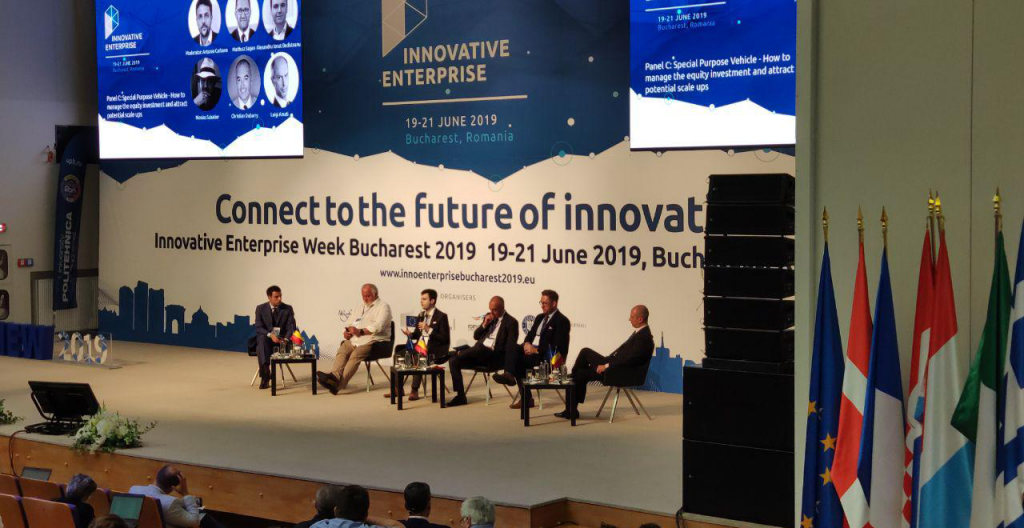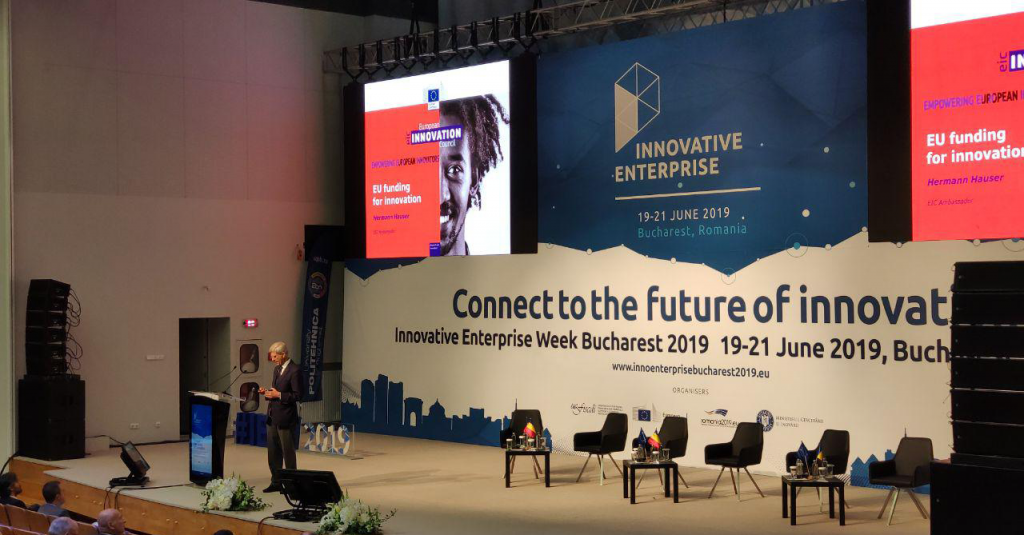Today, innovation is the key to business success. It is the transformation of a new knowledge into economic and social benefits, all of which are the result of interactions between people, researchers, firms, institutions and financiers. Innovation in any field is beneficial to all stakeholders directly and indirectly, as innovation in transport will benefit both those who have implemented it and those who benefit from it, another example being innovations in the medical system, commercial or financial.
It is certain that all innovations are based on the technological growth that is taking place all over the world, the more technology progresses, the more innovation will be in any field. But any innovation needs money, funding programs and investors. Therefore, to present the world with technology and innovation, Romania has been the host of an innovative business week. The event took place on 19, 20 and 21 July 2019, the venue of which was the Polytechnic University of Bucharest.
Over the course of three days, executives, researchers, teachers, innovation advisers, ministers, and many other founders and CEOs, who presented concepts, ideas and innovations, stepped up the stage. The three days were organized in such a way as to present to the public the steps to be taken to implement an innovation by an enterprise. Innovative and emerging technologies, FET, the words from which it starts / creates an innovation, this being the first topic of discussion of this conference.
Through the development of technology and the creation of emerging innovations, and Horizon 2020, the welfare of an enterprise, sector or countries increases, as well as the increase of employment. The innovations that opened this conference are part of the Horizon 2020 program, these being innovative and emerging technologies. Monitoring the environment, why would anyone like it? With the help of this monitoring and exploration project, the Plantoid artifact aims to provide information on plant adaptation in underground environments, as well as adapting plant roots to soil based on sensory information. If Plantoid provides ground information, the ACDC project provides information on the detection of diseases and biogenital threats, all with chemistry, liquids, DNA and artificial cells.
This artificial cell will use programmable and reconfigurable material to detect these threats within a short time and on a precise route. A third project aims at generating oxygen, proteins and fibers by extracting valuable resources from sunlight, wastewater and air using anode and cathode. The anode will take over the properties of waste water, sunlight and air, and the cathode, with the help of the chemical process, will result in oxygen, protein and fiber.
This project aims at the processing, recycling and remediation of chemical compounds in waste water, as well as the development of synthetic ecosystems to ensure a positive impact on human health in the living space. As far as human health is concerned, the M-Cube project will bring innovation into the medical world by improving the image of MRI so that physicians can present a diagnosis as accurate as possible to the patient but can detect disease even in phases incipente. On the basis of these project presentations, with the help of Horizon 2020, during the first day of this conference, national and international efforts to innovate in these technologies were discussed and the transformation of these projects into real and beneficial opportunities for mankind . From all these discussions, emerging technology innovations are on the rise and will become real, sooner or later, with the help of the accelerator.
If the first day ended with a few brief issues about the EIC accelerator, the next day, it was the topic of the discussion along with the innovation ecosystems and the trends that will lead and implement the innovation market. Let’s start with the EIC accelerator, which is an SME tool designed to support innovative ideas that have the potential to revolutionize the market for which they apply. It provides support for 2,900 projects, which consist of coaching, mentoring and accelerating services for SMEs. In line with this topic, it was also discussed the combined funding, more explicit which are best practices and policies on public, private and mixed funding. The Panel concluded that public and private funding schemes are favored as they have the potential to achieve faster policy implementation and deliver faster goods and services.
At the same time, it was argued that these paternities did not use EU funds only to a small extent. Concrete solutions have been found for these partnerships to access EU funds, so it was recommended to establish clear policies and strategies for these partnerships. Further on, these partnerships also discussed the European innovation ecosystems and the involvement of universities in this project.

It has therefore been concluded that universities contribute to the development of regional innovation ecosystems by involving students in research activities, attracting human talent by promoting business and improving social equity. It also raised the issue of protecting innovative student ideas, so a solution to this would be a collaboration from authorities to protect students’ innovations.
That is why EUA collaborates with university and business members to support regional innovation initiatives. The last day of this innovation week ended with the presentation of financial instruments that support investment in research and development of innovations that bring a benefit to human society. InnovFin Advisory has set up a program to provide support for these investments. It has three stages, the study of the theme, the consultative project and the development of the innovative ecosystem. Within these three phases, market barriers and gaps leading to slowing down funding, supporting development projects by reviewing them, advising and consulting on funding options and providing solutions for removing financial barriers are identified.
So innovation is a beneficial resource for society. It depends on a clear strategy, clearly formulated objectives, public and private funding, competent management, determination, and the desire to do what has begun. Most of the times, SMEs are considered to be the most efficient in terms of R & D, because innovation within these enterprises is associated with increasing productivity and the number of employees, and less with the growth profits. That being said, technology and innovation are the future of people and the well-being of society.


